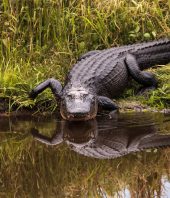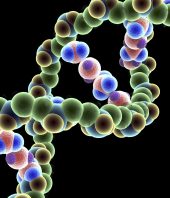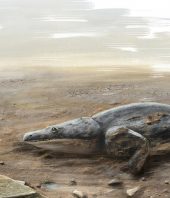This beautifully preserved, nearly complete fossil is shedding new light on the evolution of the aquatic members of a small, enigmatic group of ancient reptiles called pleurosaurs. The bones belong to a new species of pleurosaur whose anatomical features weren’t fully adapted to water, but were on the way to enabling an aquatic lifestyle. The creature (which the scientists dubbed Vadasaurus, Latin for “wading lizard”) lived 155 million years ago and didn’t have the elongated trunk or relatively shorter limbs that later aquatic species of pleurosaurs did, the researchers report today in Royal Society Open Science. So, Vadasaurus would have been less streamlined overall than its aquatic kin, they suggest. But other features, such as the shape of its skull and the shape and placement of its nostrils, hint that some aspects of the creature were indeed becoming more adapted to an aquatic lifestyle. Also, bones throughout its body were less mineralized and thus lighter than those of its landlubber kin—a shift that possibly aided buoyancy and reduced the energy needed to stay afloat when foraging. Overall, comparing Vadasaurus’s features with those of earlier and later pleurosaurs may provide scientists with insights about how evolution might have progressed among other, totally separate lineages of ancient creatures that also undertook the land-to-sea transition, including ichthyosaurs and mosasaurs, marine reptiles that swam the seas worldwide during large portions of the dinosaur era.
Source: AAAS, Full Article






